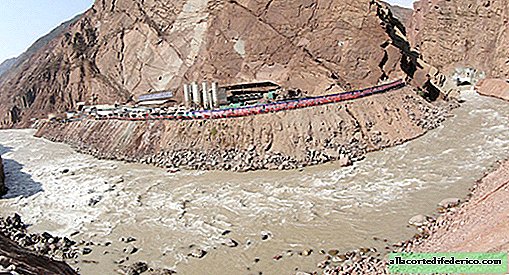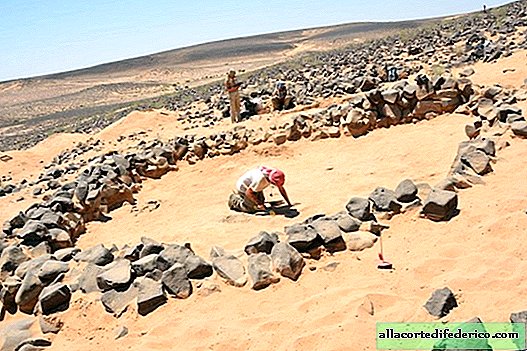Record long-term construction in the mountains of Tajikistan: the first turbine was launched at the Rogun hydroelectric station
Tajikistan is a country of snowy seven-thousanders, picturesque gorges and turbulent rivers, which mountaineering fans from all over the CIS and far abroad seek. But, despite the fact that outside the window is the 21st century, in some remote areas of Tajikistan there is still no regular power supply. The country's leadership hopes that the high-mountain Rogun hydropower plant under construction will help not only solve these problems, but also turn the country into an exporter of electricity. It is interesting that in the implementation of this technically complex and expensive project, the country's population also participated, as ordinary people invested in construction through the purchase of shares.

Rogun HPP is located on the Vakhsh River, in a mountainous, seismically active region. The dam of this station is the highest in the Vakhsh cascade, and if completed it will become the highest in the world (335 meters). In addition to it, the Vakhsh cascade includes 7 more operating hydroelectric stations and one is at the design stage. The design capacity of the Rogun HPP is 3,600 MW, which exceeds the capacity of the Nurek HPP, located downstream, which has been operating since 1972.

Rogun HPP is an impressive unfinished construction whose history begins in the 70s of the last century. The technical design of the Rogun HPP was approved in 1974, and the first workers arrived at the construction site in 1976. But due to the incredibly difficult construction conditions, the subsequent collapse of the USSR, and the material difficulties of independent Tajikistan, the construction of a grandiose construction was delayed for 40 years, and the project was still far from complete.
The environmental conditions at the location of the Rogun HPP are extremely difficult, and the builders had to solve a number of difficult tasks. This region belongs to the zone of possible 9-point earthquakes, which in itself caused a lot of criticism from the opponents of the project. The Vakhsh River Valley is also a mudflow hazardous region in which small earthquakes that can provoke the formation of a mudflow occur very often. In addition, under the base of the dam is a layer of rock salt, which can be eroded by water seeping from the reservoir, which can sooner or later damage the dam.

By 1987, the main preparatory work was completed and the Vakhsh river was closed. By 1993, the machine and transformer halls of the hydropower plants had already been partially built, but due to the collapse of the USSR and the cessation of financing, all work at the Rogun hydropower plant had to be mothballed. After the spring floods of the Vakhsh River destroyed the dam, the station's internal halls were filled with streams of mud and rocks. It seemed that the station has no future.

In 2004, the tunnels and halls of the station were cleared, and in 2009, the government of Tajikistan organized the issue of shares of the hydropower plant under construction, forcing citizens of their own country to buy them. But the funds raised were not enough, and since 2010 borrowed funds of foreign investors have been attracted for the construction.
In the fall of 2016, the Vakhsh riverbed was again blocked, and the first Rogun station hydraulic unit was solemnly launched on November 16 this year. The installation of hydraulic units is carried out by a Ukrainian company, and the completion of the construction is carried out by an Italian company. It is planned that the second turbine will be launched at the beginning of 2019, and there should be 6 of them in total.
Despite the fact that this grandiose construction was delayed for many years, many in Tajikistan believe that the Rogun hydroelectric station will be completed and it will help solve the energy problems of the republic.


















